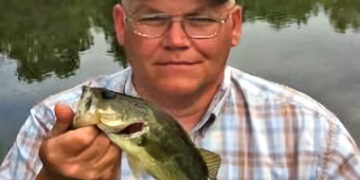The Ohio Department of Natural Resources (ODNR) Division of Wildlife is advising Ohioans to exercise caution during outdoor activities this summer to minimize contact with ticks. Ticks, which can carry potentially dangerous diseases, are prevalent throughout Ohio.
Outdoor enthusiasts, including anglers, birders, hikers, and hunters, should take preventive measures to avoid tick bites. ODNR recommends treating outdoor clothing with permethrin-based repellents as directed on the label. Wearing long-sleeved shirts tucked into pants with pant legs tucked into socks or boots can help keep ticks outside clothing. Opting for light-colored clothing also aids in tick detection.
After any outdoor excursion, thoroughly check clothes, skin, pets, and gear for attached ticks. Swift tick removal is crucial to reduce the risk of tick-borne diseases. Use tweezers or gloved hands to remove ticks by grasping them as close to the skin as possible and pulling straight back with steady pressure.
Ohio hosts three medically significant tick species: the American dog tick, blacklegged tick, and lone star tick. All three species can transmit diseases to humans and pets. Vigilance is essential, particularly from summer to fall when the risk of tick-borne diseases is highest, although Lyme disease can occur year-round in Ohio.
For further information on tick species and their identification, including photos, visit the Ohio Department of Health webpage. To learn more about tick-borne diseases and their symptoms, refer to cdc.gov/ticks.
Remember to regularly check for ticks and promptly remove them as ticks can transmit diseases within 36 to 48 hours after initial contact. Outdoor activities and proximity to wildlife increase the chance of encountering ticks. Tick control for pets in outdoor settings is also important.
While wild animals such as deer are unaffected by blacklegged ticks and Lyme disease, hunters should take precautions when hunting and dressing deer to avoid tick exposure. It is worth noting that Lyme disease cannot be transmitted through the consumption of venison.
Keywords: Ohio Ticks ODNR, Ohio Ticks ODNR



















































































